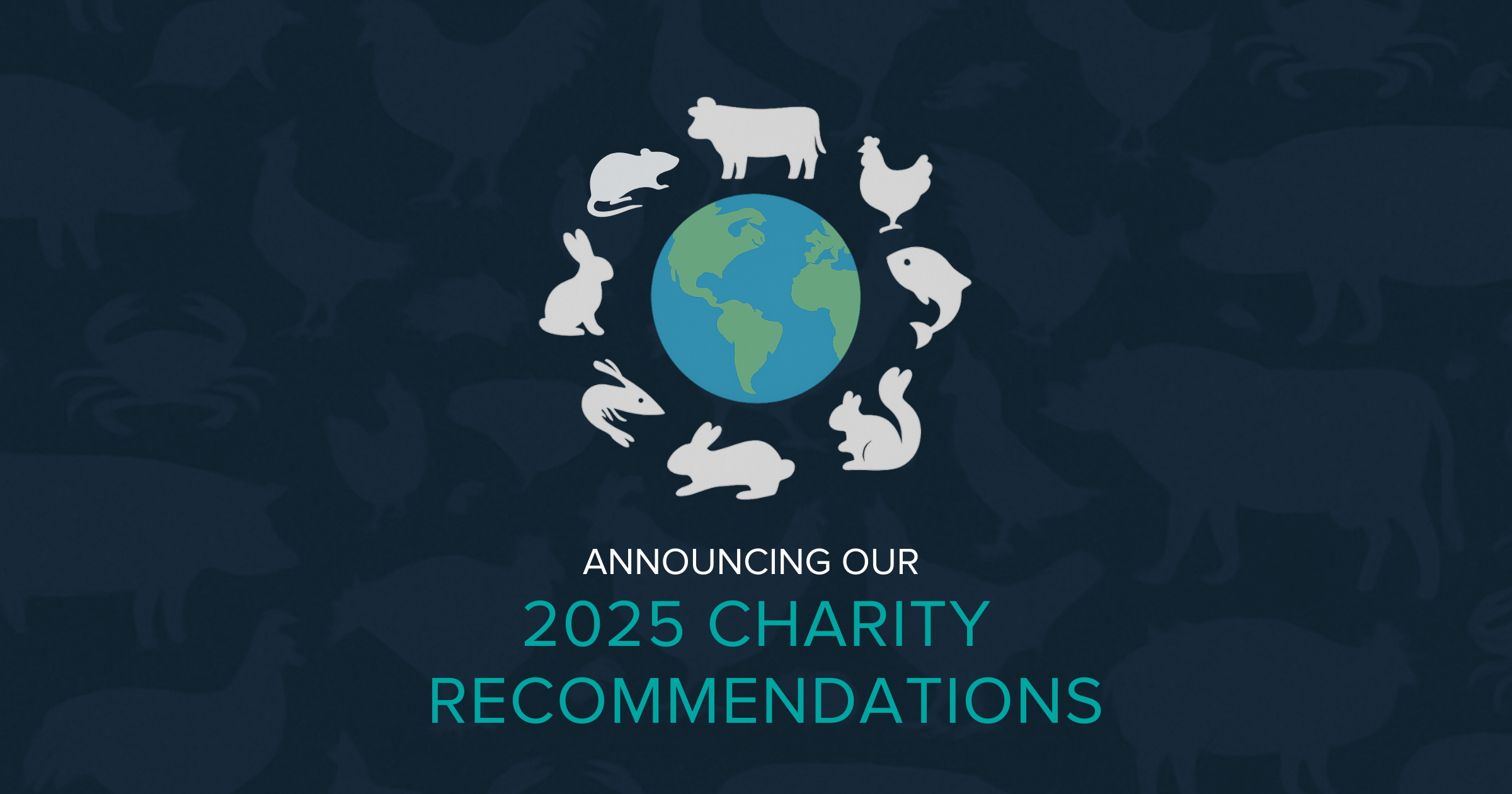Blog
Blog
The ACE blog was created as a platform to share news, ideas, and discussions that are relevant to our mission of promoting the most effective ways to help animals.
02 Nov, 2025
Announcing our 2025 Charity Recommendations
Discover our 2025 charity recommendations — top animal welfare charities, impact analysis, and giving insights today!

Browse our content by:
Filter Category
sort by
















